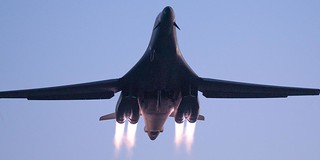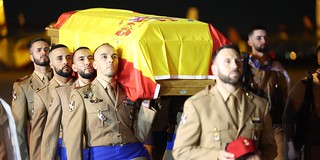The serious risks that United States Navy helicopter aviators face
The naval aviators who fly the helicopters of the United States Navy do not usually have a prominent role in popular culture.
Movies always focus more on fighter pilots, but helicopter pilots play a very important role in the daily activity of the United States aircraft carriers . In fact, a helicopter is always the first aircraft to take off and the last to land each day on one of these huge ships, so that they are always ready to rescue their companions in the unlikely event that an aircraft falls overboard. . Thus, they are like the guardian angels of the embarked air wing of each aircraft carrier.

To this rescue mission, the current crew members of the MH-60 Seahawks (like the pilots of the old SH-3 Sea King) add other important tasks, such as detection and fight against hostile submarines, in the case of the MH-60R Seahawk, which are equipped on the port side of their fuselage with a sonobuoy launcher for this detection task, and which can be armed with Mk-54 torpedoes and AGM air-to-surface missiles -114 Hellfire, plus a 12.7mm GAU-16 heavy machine gun on her starboard porthole, for close support missions.

Another important task of the MH-60 Seahawks is the transportation of both cargo and personnel. This includes assuming in-flight refueling missions between support ships and the aircraft carrier, as well as transferring of personnel to other ships and to the mainland and the infiltration and exfiltration of troops in hostile territory, including operators of the famous US Navy SEAL teams.

These varied tasks considerably increase the flight hours of the MH-60 crews and also increase the serious risks to which they are exposed. On these risks and on the preparation of these pilots to face them, the Spanish aerospace engineer Sergio Hidalgo has published a very interesting and complete video, within the series that he has been dedicating to the US aircraft carriers, after a visit to the USS George H.W. Bush (CVN-77). The video is in Spanish, you can activate the automatic subtitles in English in the bottom bar of the player:
---
Lead photo: U.S. navy. An MH-60S Seahawk helicopter from Helicopter Sea Combat Squadron (HSC) 7 "Dusty Dogs" approaching the flight deck of the aircraft carrier USS Harry S. Truman (CVN 75) for landing, during a deployment to the Gulf of Oman on 19 October 2013.
|
Don't miss the news and content that interest you. Receive the free daily newsletter in your email: |
- Most read
- The brutal 'touch and go' of a Lufthansa Boeing 747 at Los Angeles Airport
- An American airman used a Flag of Spain to direct a B-1B Lancer bomber
- The massive takeoff of more than half of the United States B-2 Spirit stealth bombers
- Sierra Army Depot, a huge United States base with hundreds of Abrams tanks stored
- Honors to Corporal Palacios of the Spanish Army who died in an exercise in Poland
- Eurofighter vs F-35: the opinions of professional pilots on these advanced fighters
- Portugal confirms that it has begun its transition to the F-35 and indicates bad news for Spain

 ES
ES







Opina sobre esta entrada: